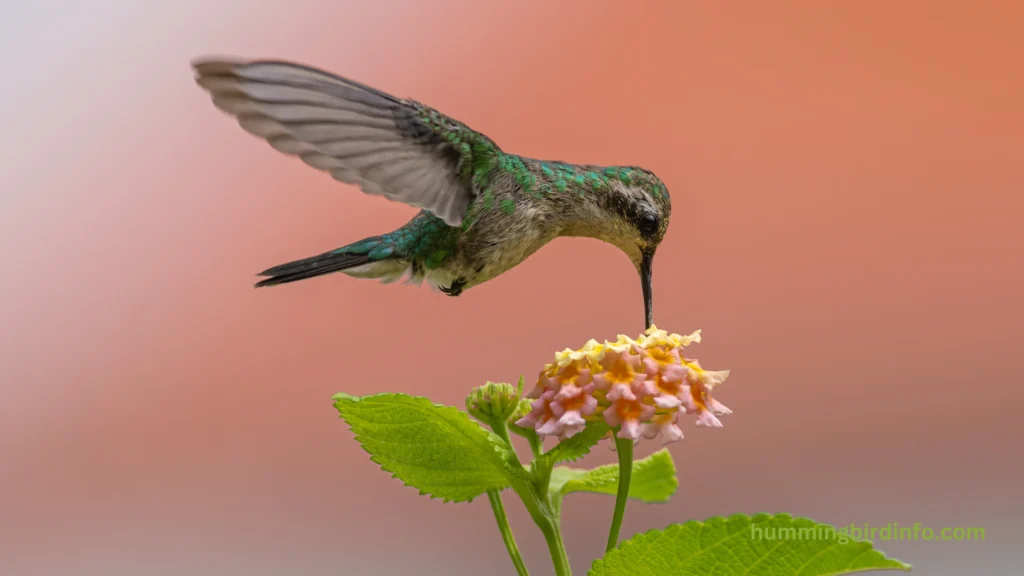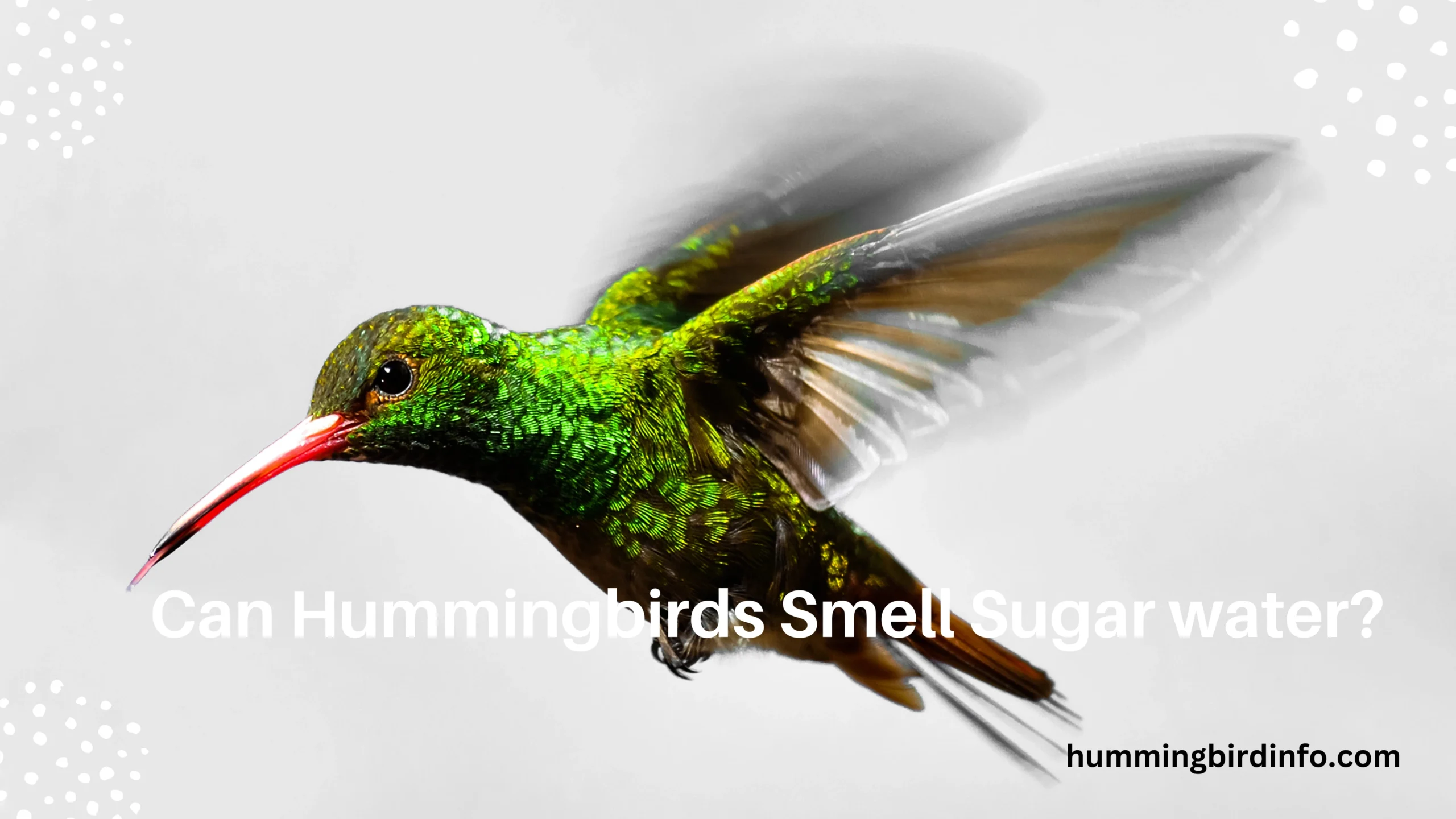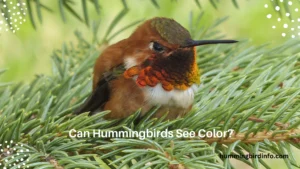Hummingbirds are more than just tiny, dazzling acrobats darting from flower to flower. These high-energy flyers rely on sweet nectar to survive, often visiting hundreds of blooms or feeders each day.
Backyard bird lovers often attract them with sugar water, hoping to witness their aerial magic up close.
But here’s the fascinating twist: can hummingbirds actually smell sugar water? Or do they rely only on their sharp vision and memory to find feeders? For years, we believed that these birds, like most others, lacked a keen sense of smell—but that belief is beginning to change.
This blog dives deep into the science behind hummingbird senses, exploring whether they can smell sugar water, how they find food, and what new research is revealing. Whether you’re a bird enthusiast or just curious about nature’s marvels, this topic is more eye-opening than you might think.
Contents
Hummingbird Sensory Abilities
Hummingbirds have excellent vision, capable of detecting colors far beyond human eyes. They can even see ultraviolet light, helping them find nectar-rich flowers quickly.
Their strong attraction to bright red colors is why many feeders are designed in red hues. This visual cue has traditionally been thought to be the primary method of finding food.
Hummingbirds also have a sensitive sense of taste, which helps them detect different sugar concentrations in nectar. This allows them to pick the most energy-rich sources efficiently.
For years, scientists believed hummingbirds had a poor sense of smell due to their small olfactory bulbs. But recent research has challenged that notion.
A study by the University of California, Riverside revealed that hummingbirds can smell certain insect-related chemicals like formic acid and ant pheromones—substances they actively avoid.
These findings prove hummingbirds have a functional olfactory system, though it’s still unclear if it helps them detect positive scents like sugar water.
We still don’t fully know if they use smell to find feeders. The studies mainly tested repellent odors, not attractive ones like nectar.
So, the big question remains: can hummingbirds smell sugar water from afar—or are they simply guided by sight, taste, and habit?
How Hummingbirds Find Food
In the wild, hummingbirds rely on flower color and shape to find nectar. Some blooms even have UV patterns, acting as nectar guides visible only to birds.
Their sharp eyesight lets them quickly locate productive flowers, especially red and orange ones known to offer abundant nectar.
At backyard feeders, color and placement are key. Hummingbirds are drawn to red feeders that stand out against green backgrounds like trees and shrubs.
Once they discover a reliable feeder, their remarkable memory kicks in. They can remember specific feeder spots and return at precise times.

Hummingbirds also combine multiple senses to make decisions. While vision leads the search, taste and possibly smell help them evaluate food quality.
Although we know they can smell certain threats, it’s still unknown if their nose detects sugar the same way. But there’s evidence they use a combination of senses to thrive.
The Science of Sugar Water
Natural nectar is a mix of sucrose, glucose, and fructose with some amino acids and minerals. Sugar water mimics this with a basic sugar-to-water ratio of 1:4.
When mixed correctly, sugar water is safe and highly attractive to hummingbirds, giving them the fast energy they need for flight.
But does sugar water have a scent? Technically, sugar alone doesn’t smell much, but chemical compounds can form a faint scent in warmer temperatures.
These scent traces are likely weaker than floral scents, which have evolved to be strong and complex to attract pollinators like bees and butterflies.
Therefore, even if sugar water gives off a scent, it’s unlikely to compete with the vivid colors and aroma of flowers, which are far more noticeable.
Implications and Future Research
Learning that hummingbirds can smell challenges old scientific beliefs. It opens the door to a better understanding of avian sensory ecology.
More studies are needed to find out if they can smell sweet solutions like sugar water. So far, most tests have focused on bad smells, not tasty ones.
Important questions still remain: Can they tell the difference between sugar water and plain water using only smell? Does sugar concentration change their olfactory behavior?
Scientists are considering experiments using feeders with varied sugar smells. This could help test how smell interacts with vision and memory in food detection.
Understanding hummingbird senses can even support conservation efforts. Knowing how they find food may help preserve their natural habitats and food sources.
What This Means for Bird Lovers
For backyard enthusiasts, this science adds a new layer of wonder. It’s not just about where you hang the feeder, but how birds experience it.
Color and placement remain the most important, but don’t underestimate the potential role of scent in future designs.
If scientists prove hummingbirds can smell sugar, it could lead to new feeders that optimize smell and sight, helping birds find food even faster.
This knowledge enhances our appreciation of these birds’ intelligence and adaptability. They are more than just pretty fliers—they are smart, sensory-driven creatures.
As we learn more about their abilities, we’re reminded how much mystery still lives in the treetops—sometimes just a few feet from our windows.
Conclusion:
Hummingbirds have long captivated us with their speed, color, and agility. For years, it was believed they relied solely on vision and taste to find nectar.
But emerging science is revealing that these birds also have a functional sense of smell, helping them avoid dangers and maybe even detect sweet rewards.
While we don’t yet know if they smell sugar water the same way we do, the idea opens fascinating possibilities about how they survive and thrive.
This growing knowledge reminds us that even in the world of well-known animals, there is still so much left to discover. From the hum of wings to the hint of scent, hummingbirds are full of surprises.
FAQs
1. Can hummingbirds smell sugar water?
Maybe. While they can detect certain smells, it’s unclear if they can actively smell sugar water from a distance.
2. What sense do hummingbirds use most to find food?
They rely heavily on vision, especially bright colors like red. Their eyes are more important than their noses in finding nectar.
3. Why are hummingbirds attracted to red?
Red flowers tend to offer more nectar, and hummingbirds evolved to seek out these productive sources.
4. Do hummingbirds have a sense of smell at all?
Yes! Research has shown they can smell certain insect-related chemicals and avoid harmful scents.
5. Can sugar water go bad and affect hummingbirds?
Absolutely. Fermented or moldy sugar water can be dangerous, so always keep feeders clean and fresh.
6. What is the best sugar-water ratio?
The ideal mix is 1 part white sugar to 4 parts water. Avoid using honey, brown sugar, or artificial sweeteners.








